Raised Bed Gardening Do’s and Don’ts
Gardening in raised beds is one of the most common ways to grow food for the home gardener. Using this method provides many benefits, the primary one being soil control. This is especially beneficial if you currently have less than ideal soil in your backyard.
But are there practices you can put in place that can help or hinder your efforts. In a word, yes.
*links below contain affiliate links meaning that if you purchase from my link, I will gain a commission at no cost to you*
I’ve been growing in raised beds for over 10 years and it seems like every year, I end up adding in another one. Over the years — and currently sitting at 19 raised beds and counting — I have learned what is good to do and what you should avoid doing to have the most success.
Do Consider Bed Height
There isn’t a right height or a wrong height for your raised bed garden. Instead, it’s more of a consideration of your goals and what works best for you. I have raised beds that range from 8 inches tall to 30 inches tall. I think my favorite height is around 15 inches, but in order for you to consider what the ideal height might be for you, let’s think about some factors first.

Ease of Working in the Garden Bed
The taller the raised bed is, the less you have to bend down to work in it. This can be a huge benefit especially if you struggle with back pain or mobility issues. Still, even a short raised bed is easier to work than growing in the ground.
Weed Pressure
Another benefit of a taller raised bed is weed pressure. You don’t have to worry about most weeds coming up through the soil from the ground below if you have a tall raised bed. Usually the only ones I deal with are any seeds that get blown in. In comparison, if you have a short raised bed, weeds can grow up through the bed.
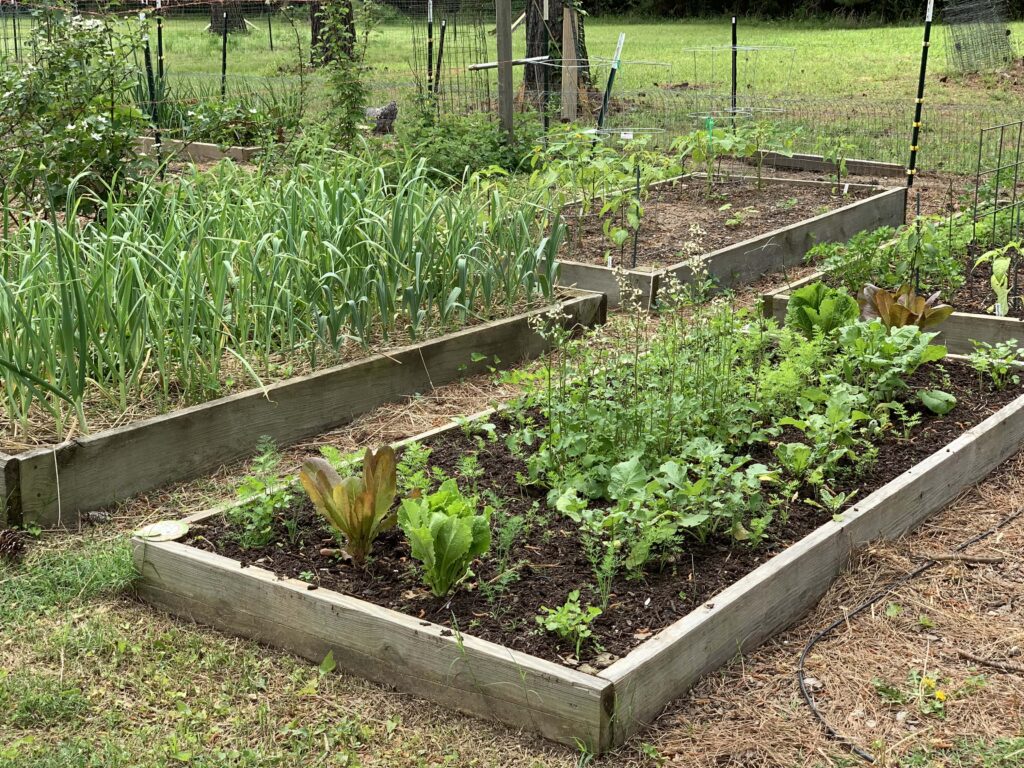
Animals
One other benefit is that usually if you have a tall raised bed, smaller critters like rabbits cannot as easily access the food you have growing. Unless you have a fence around your garden, it’s easier for a rabbit or squirrel to access the crops when the bed is short.
Filling the Beds
One drawback to consider when thinking about tall raised beds is that you have to fill it. You can fill the bottom with other materials besides soil that will break down over time, but it can still be an expense to get the soil to the level you want. If the bed is short to begin with then you wouldn’t have to add much soil. Click here to see how I fill my raised beds.
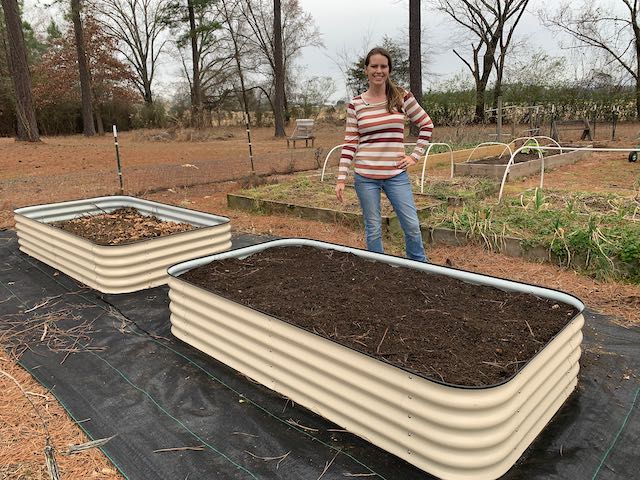
Height of Crops
Another thing to consider is how tall are the crops going to get that you want to put in the bed. If your raised bed is already on the taller side (24-36 inches tall or more), you might want to consider growing plants that stay lower to the ground because they are easier to cultivate and harvest. An example of this would be to grow bush beans that get maybe 18 inches tall rather than pole beans that can get 6 feet tall.
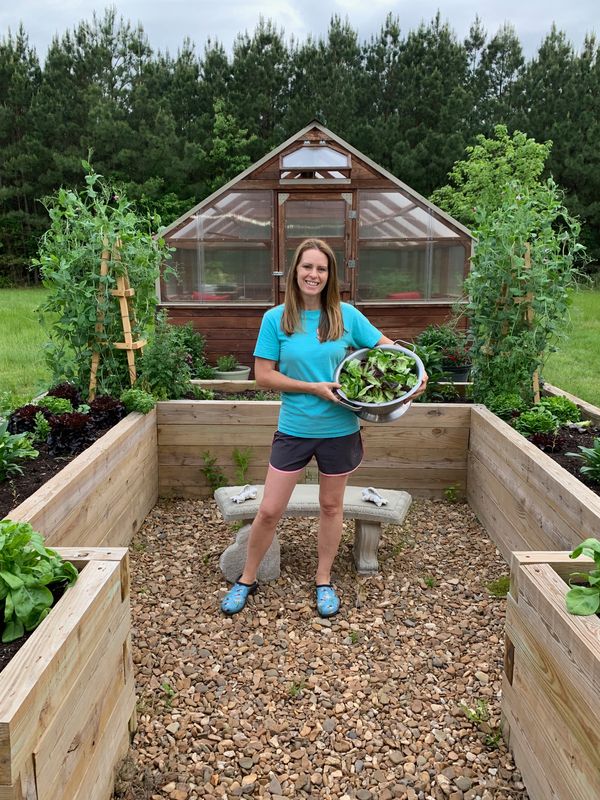
Access to Ground Soil
A great thing about short beds is that the roots of the plants can grow into native soil, which often is full of minerals and nutrients. I don’t put landscape fabric down to separate the native soil from what I add into my raised bed. This allows the plants to gather nutrients from the native soil as it grows and matures.
Don’t Think It Has To Be Done All At Once
If you were to look out into my garden currently, I have 19 raised beds. That didn’t happen all in one season. It took several years to build or purchase all of these beds and the components to go in them.
Like many beginners, I started with a couple beds and mainly grew the rest of my crops in the ground. After seeing how much better my crops performed in the raised beds than in the ground, it was enough to keep me going to build or buy more. My favorite raised beds are my Birdies raised beds from Epic Gardening. These durable, metal raised beds are built to last for a long time. Click here to see more about these raised beds.
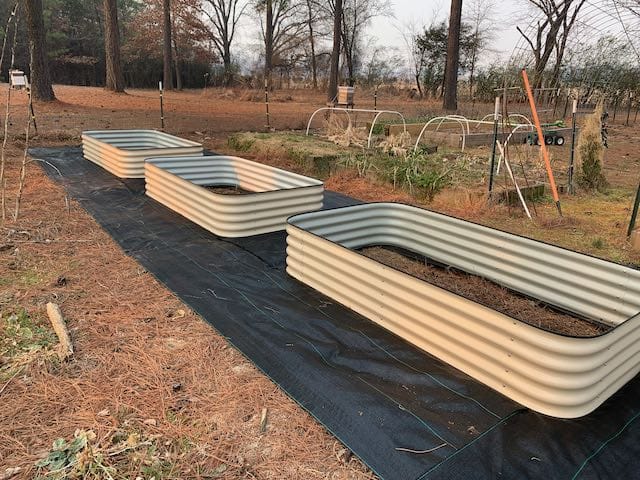
Do Limit Your Bed Width But Not the Length
How wide should your raised bed be? I have beds that are 2.5 feet, 3 feet, and 4 feet wide, and each one is different for its own reasons.
Usually if you can only access one side of the raised bed (like if it is up against a fence or a wall) then I would say make it no wider than 2.5 feet so you can easily reach to the other side. If the bed is out in the open, you can go up to four feet but no wider. This width allows you to easily reach the middle of the bed from either side without having to step into the bed and compact the soil. This, of course, depends on your reach. Many gardeners find three foot beds to be more comfortable.
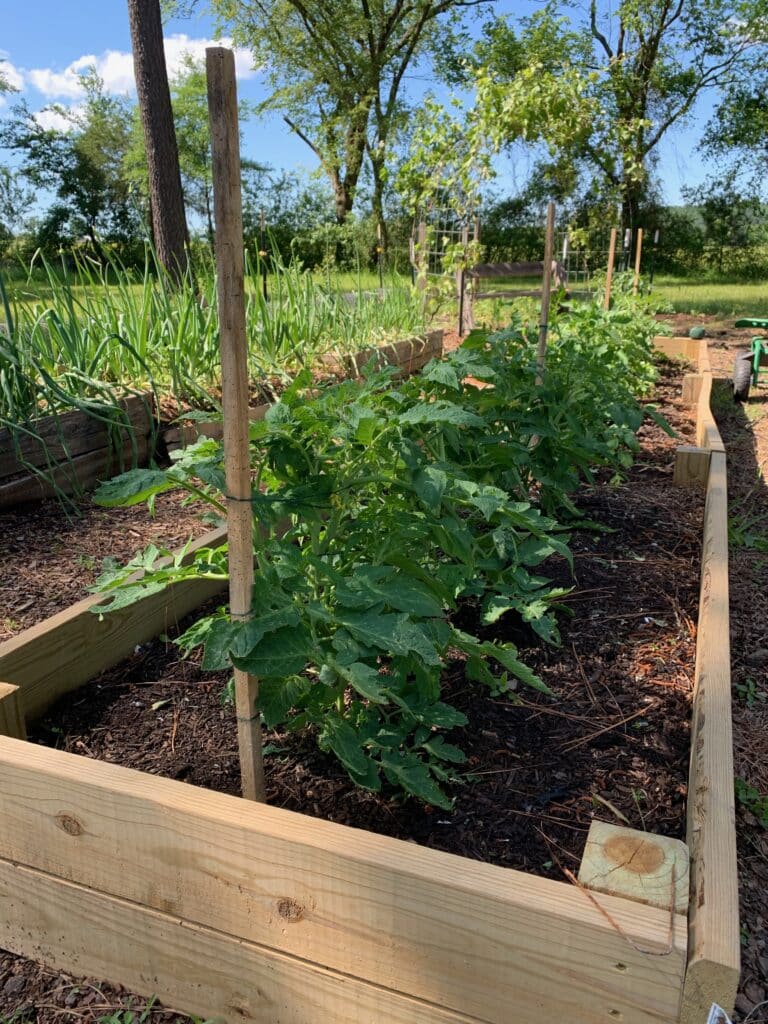
You might also consider crop rotation when choosing your bed width. I have a mixture of in-ground growing space and raised beds. Because my in-ground rows are four feet wide, having four feet wide raised beds makes crop rotation easier because I already know how to lay out a bed when I switch a crop to it. To learn more about crop rotation, click here.
While bed width can be super important, the length isn’t as much of an issue. Make sure you maximize your space that you have to work with. I like longer beds because it allows more growing space. The only drawback is if you are in the middle of a long bed, you may have a longer walk to move around to the other side. This is a trade-off I’m willing to make to get more garden space.
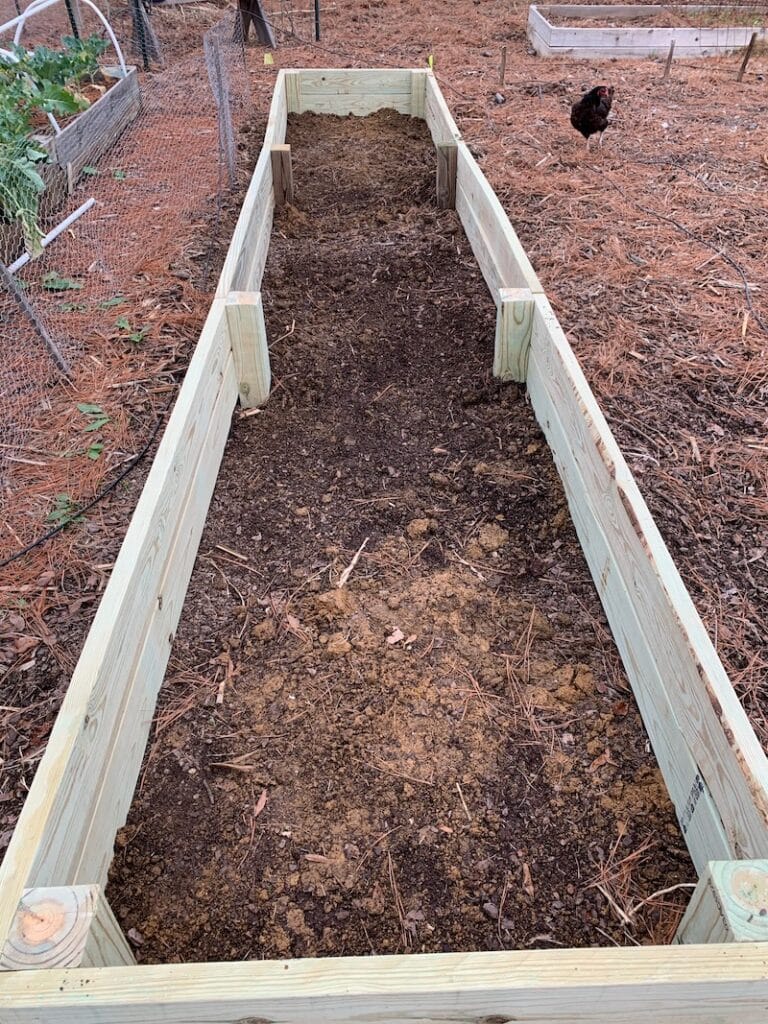
Do Think About Space Between Beds
Make sure you have enough space to work comfortably between beds and bring amendments to the beds. For most gardeners, we want to ensure we can get a wheelbarrow between beds.
This is something I wish I had thought through more before I placed my first raised beds in my garden. I can’t fit a wheelbarrow between some of the beds to bring in amendments. It is also difficult to bend and work in one without bumping into another.
On the opposite end, avoid placing the beds too far apart because that can become wasted space and make more work for you when you have to lay down mulch or mow between them.
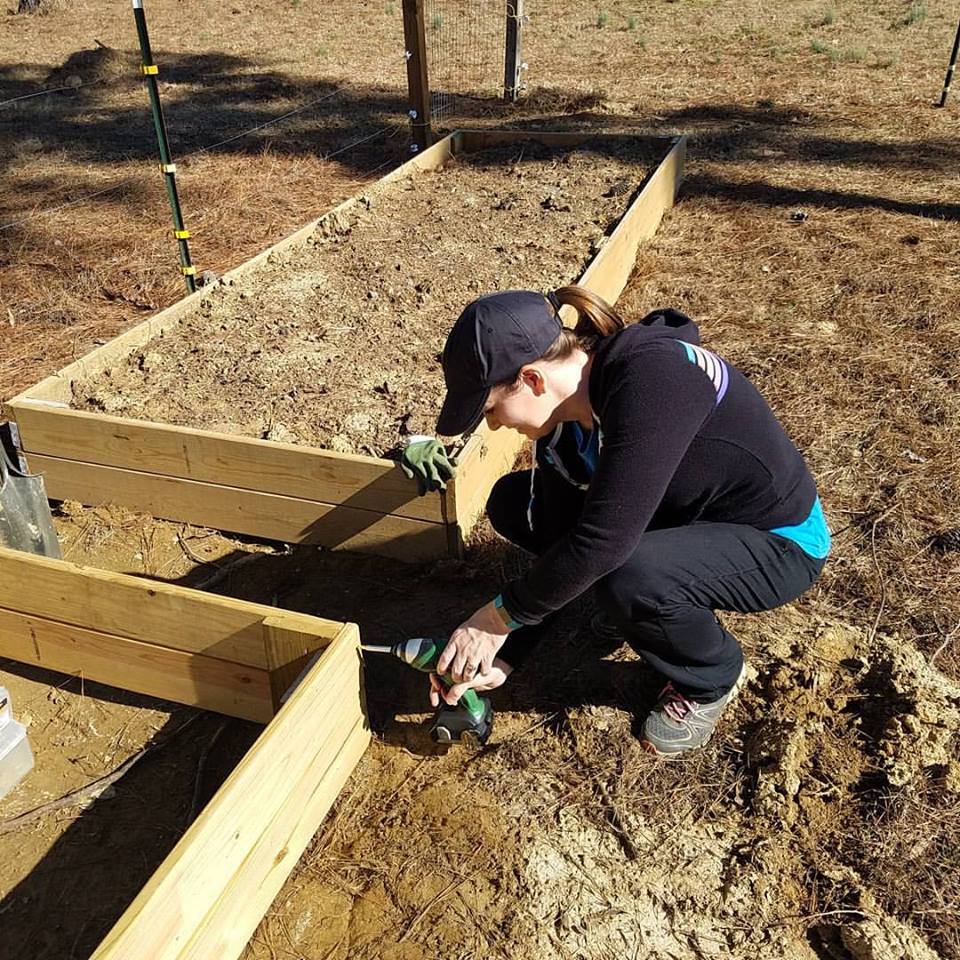
Don’t Be Afraid To Use Treated Lumber
While I do love using the Birdie’s Raised Beds, I also use wood to build my raised beds for various reasons. If you look online, you will see people cautioning you to not use treated lumber. Prior to 2003, arsenic was used in the process to treat lumber, but that has since been discontinued. Now copper is used instead. Based on my research and my personal choice, I believe if there was to be an issue with too much copper getting into your plants, you would be able to see that on the plant before you would go about ingesting any fruit the plant had produced.
A couple notes here though, this is my personal opinion and I like the cost savings it gives me. Essentially, I can grow more food in more raised beds compared to spending more for rot-resistant lumber. But this is a personal choice. I suggest doing your own research and decide what you’re comfortable with.
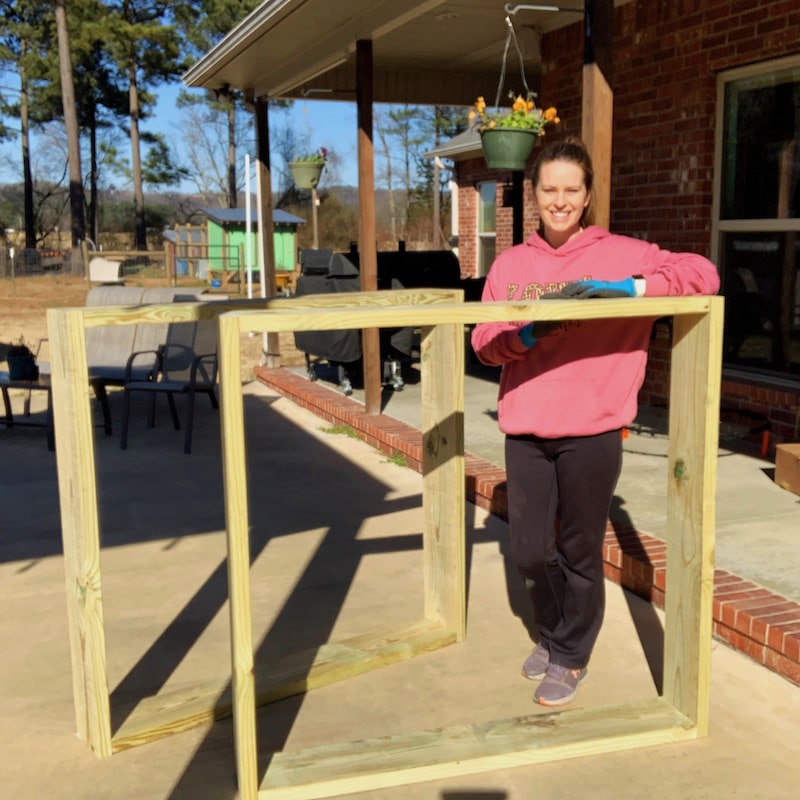
Do Fill the Bed to the Top
Filling your beds to the top is key for new raised beds, especially if you are filling the bottom with sticks or shredded leaves to save on the cost of the soil. The beds will settle (a lot). By filling to the top, the settling won’t bring the soil level too low, casting shade on your plants. Also, plan to top off your raised beds once or twice a year with compost. Click here to learn more about filling a raised bed with cost saving ingredients.
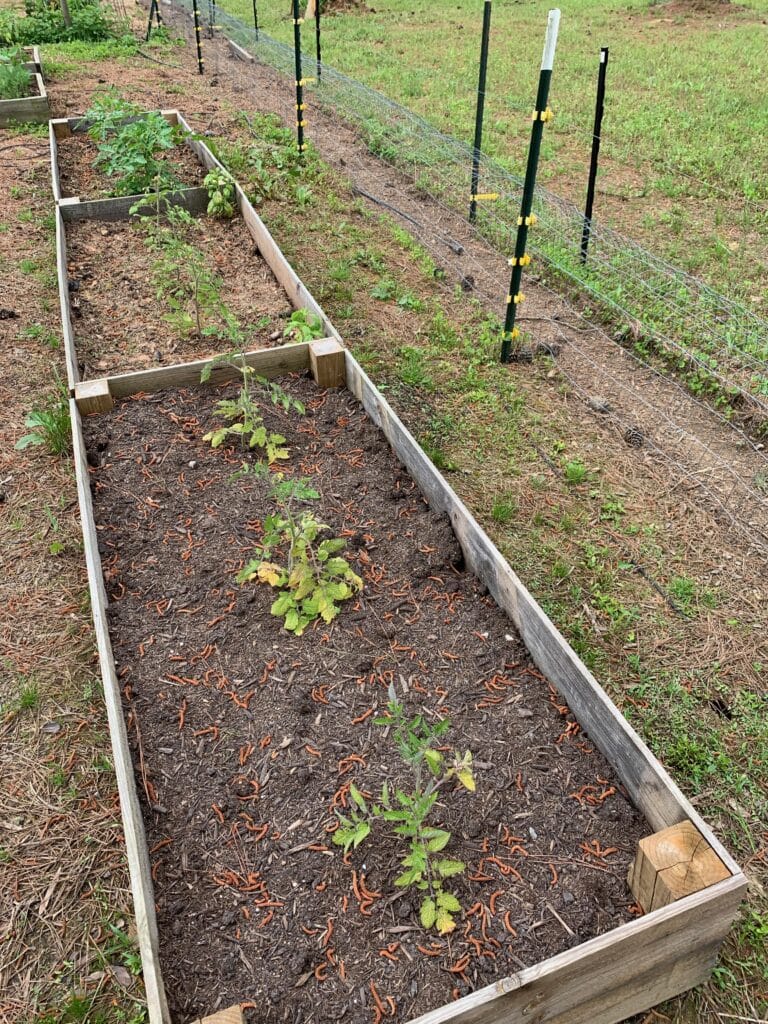
Don’t Feel Like You Have to Follow Row Spacing Guides
If you have ever looked at the back of a seed packet, you have probably noticed the plant spacing guides. This is what tells you how far apart you plant crops and how far apart to plant your rows. The row information on spacing is assuming you need to walk between rows or get some sort of implement between the rows. This does not apply to raised bed gardening.
While you should still consider how far apart you plant your crops within the row, you can get closer with your rows since you can walk around the raised bed to maintain the crops.
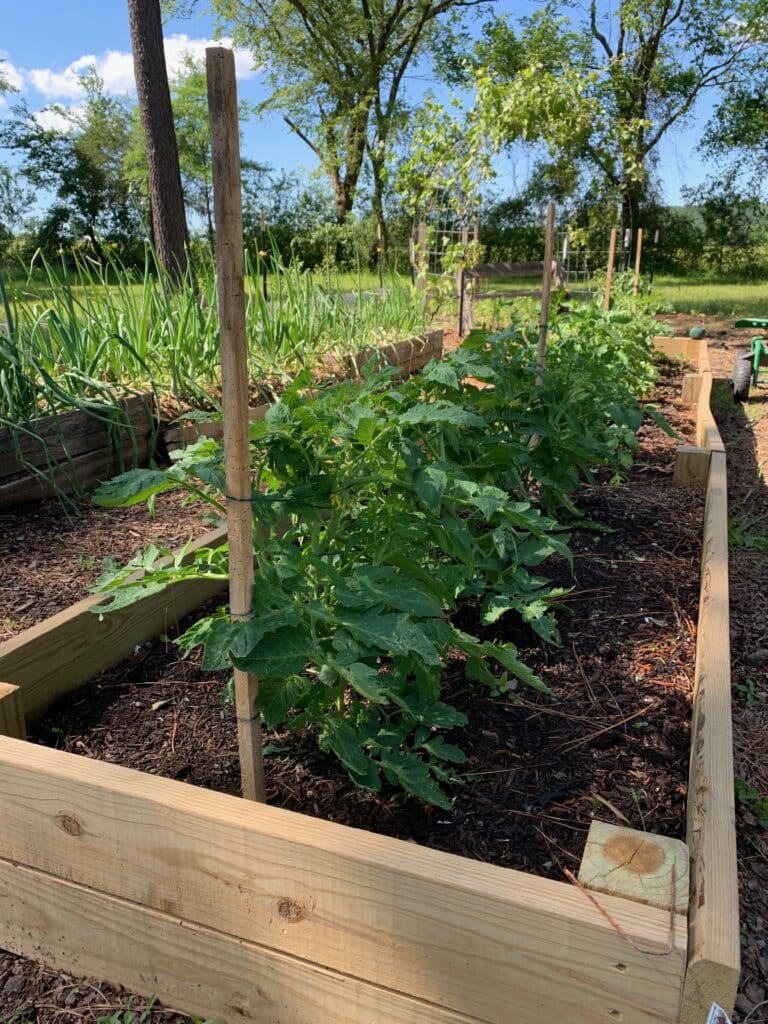
Do Consider Irrigation Options Before Planting
Thinking about how you will water the plants may be the last thing you think about before you get anything planted, but trust me, it’s not. I have tried to snake drip tubing around growing plants and believe me, it’s not enjoyable. If you are planning to irrigate your garden with drip irrigation (which is what I recommend out of all the irrigation options I’ve tried), you’ll be glad you situated the tubing before you planted anything.

My personal favorite way to irrigate my garden is with my Garden in Minutes Garden Grid (get $10 off your purchase of $100 or more with my code JILL10). The Garden in Minutes grids are easy to assemble and give your garden bed full coverage of water instead of having dry spots.
Don’t Plant Perennial Herbs in Your Annual Garden
I prefer to have perennial herbs in pots — or in a place not in the midst of my annual garden plants. That way, I can control their size and they don’t take over a raised bed over time. Some herbs, especially ones like oregano, mint, thyme, and rosemary, like to spread out and won’t always stay in this small little area like they did when you purchased them.

Final Thoughts
A bonus tip I have for you is to enjoy the process. I hope this article has given you some great tips to get you started but I hope you’ve realized that it is a process and one that can take years to achieve what you truly want. Don’t feel like it all has to be done or perfect before you can get started. To me, growing in raised beds is some of the most enjoyable gardening I do because it can be less work and less weeding with more harvest! Hopefully with these tips you can enjoy it as well.
If you’d like more ideas for how to fill your raised bed, click here to download my Raised Bed Soil Options Guide.

